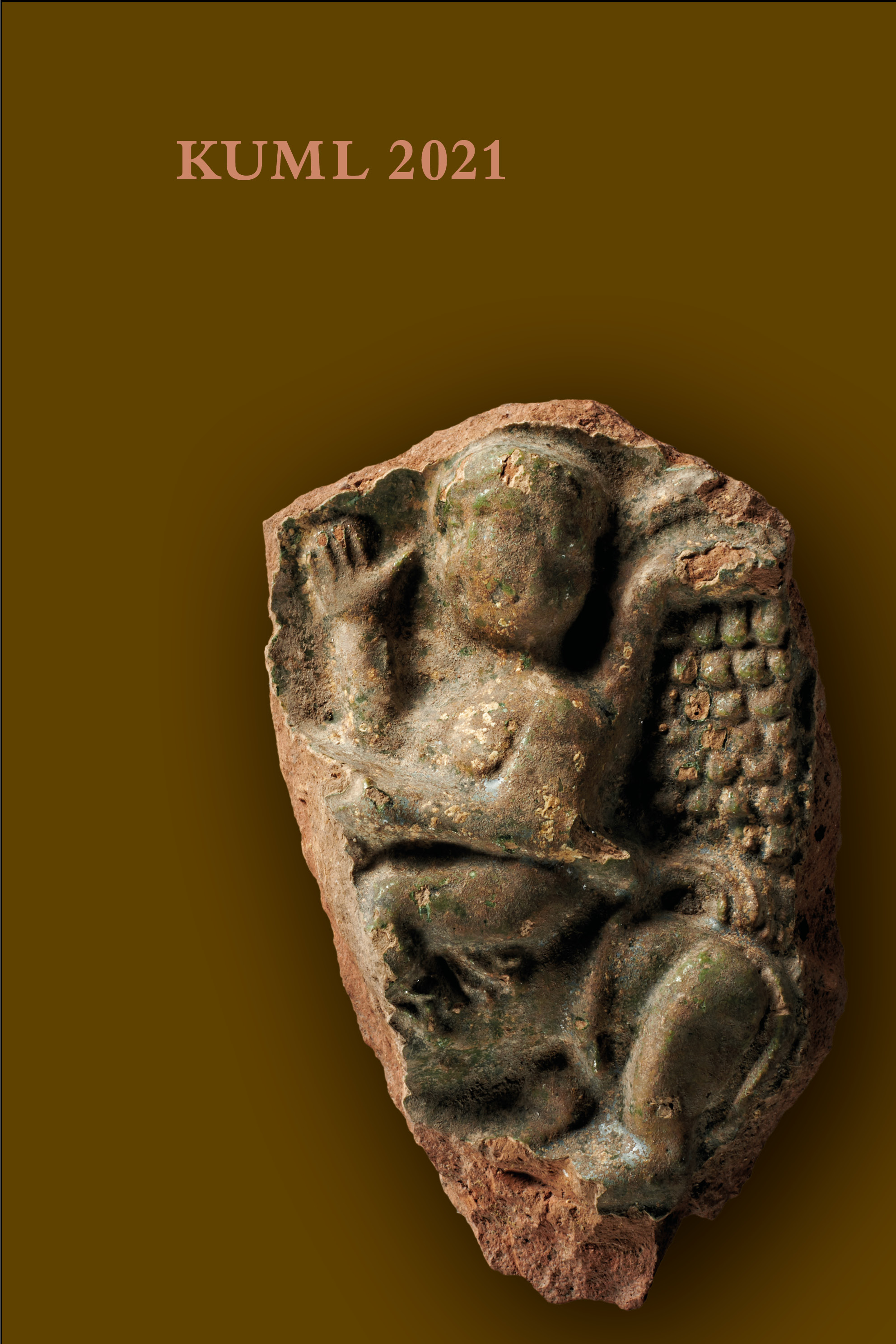Østrup Slot
Nye og gamle undersøgelser 1894-2017
DOI:
https://doi.org/10.7146/kuml.v70i70.134637Nøgleord:
Østrup SlotResumé
Østrup Slot
New and old excavations 1894-2017
In the spring of 2017, archaeologists from East Jutland Museum undertook an excavation at the medieval castle of Østrup Slot, located 10 km east of Randers on the north side of Randers Fjord. The excavation formed part of a restoration project at the castle and was aimed at documenting the damage caused by the construction of a geothermal heating system.
The castle has currently both a partially preserved rampart and a moat, as well as a small section of stone wall. The eastern and southern parts of the castle have been demolished and replaced by modern structures. The castle originally covered an area of around 80 x 100 m. Excavations have previously been carried out at the castle by the Danish National Museum in 1894 and 1913, and there are also a number of written records associated with it. Throughout the Middle Ages, the castle was owned by the Church, but it passed to the Crown during the Reformation and was subsequently used as a hunting lodge. In 1591, Frederik II ordered the castle to be demolished, as it was in too poor a state to be repaired.
During the recent excavation, chronologically discrete phases representing presumed construction phases were recorded. The results of this excavation were supplemented by information from the earlier excavations in 1894 and 1913. The excavations show that the oldest part of the castle was built as early as the late 11th or early 12th century. The site appears to have been unfortified during this early phase, but at some point during the 13th century a small rampart and moat were constructed. It appears that this early fortification was constructed over a massive layer of burnt material, which could indicate that the fortification took place in response to an attack on the site sometime in the 13th century. In the 14th century, the castle underwent extensive expansion and rebuilding. The size of the moat and the ramparts doubled, and a large new building was constructed. Likewise, the early excavations showed that stone buildings were constructed along the ramparts on both the eastern and western sides. Overall, the fortification’s defensive capabilities were significantly improved. The 14th century traces constitute the latest surviving remains of the castle. No remains were recorded from either the Late Middle Ages or the Renaissance until the castle’s demolition in 1591.
An attempt has been made to link the excavation results to the historical developments. It is clear from the excavation in 2017 that Østrup was already about 100 years old when it was first mentioned in written records in 1191. It is not clear, however, when Østrup came into the possession of the bishopric of Aarhus.
It was not possible to date the early fortifications more precisely than to the 13th century. The fact that the fortifications were constructed over a burnt layer indicates that the time of their construction should be sought in the turbulent period around the middle of the century, when the sons of Valdemar Sejr battled for power in the kingdom. There were several episodes at this time that may have resulted in the site being burnt down. Similarly, the expansion and reinforcement of the castle in the 14th century corresponds well with historical developments when the entire country was mortgaged to the Holstein counts. Bishop Svend of Aarhus was caught directly in the middle of this power struggle and was eventually forced to flee the country in the 1330s. Subsequently, ownership of Østrup probably passed to one of the Holstein counts. It is impossible to determine whether the entrepreneur behind the great expansion of Østrup’s fortifications was Bishop Svend or a Holstein count, potentially Count Gerhard III, as all these events took place within a relatively short period of time.
The strengthening of the fortifications could also have taken place in conjunction with the major revolts against Valdemar Atterdag in 1351 and 1357. During both insurrections, however, the bishop sided with the king, and there therefore do not appear to be any immediate grounds for an expansion of the fortifications.
There were generally few privately owned castles in the environs of Randers during the Middle Ages, but Østrup is an exception here. This should probably be seen as an indication of a strong royal presence in the area. Østrup was probably given to the Church in the second half of the 12th century: A time when Crown and Church worked closely together and constituted a powerful force in Denmark. The Church was, on the same occasion or shortly afterwards, probably given large areas of land in the area to support its new holdings and it managed to hang on to these throughout the Middle Ages, until the monarchy took over Østrup after the Reformation.
Downloads
Publiceret
Citation/Eksport
Nummer
Sektion
Licens
Fra og med årgang 2022 er artikler udgivet i Kuml med en licens fra Creative Commons (CC BY-NC-SA 4.0).
Alle tidligere årgange af tidsskriftet er ikke udgivet med en licens fra Creative Commons.


